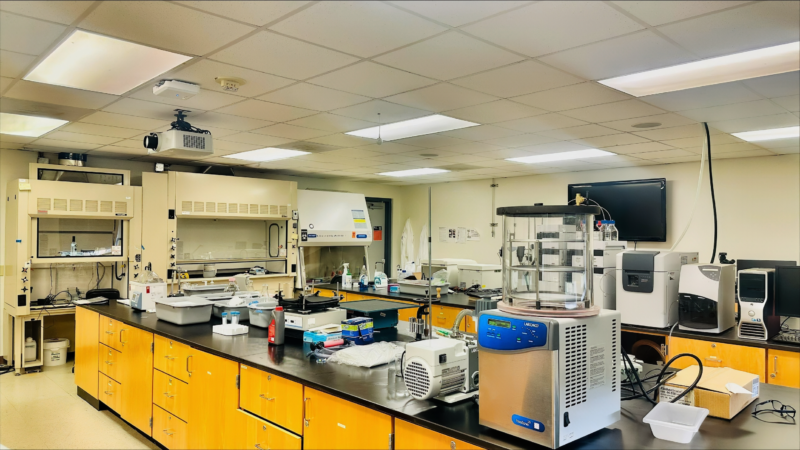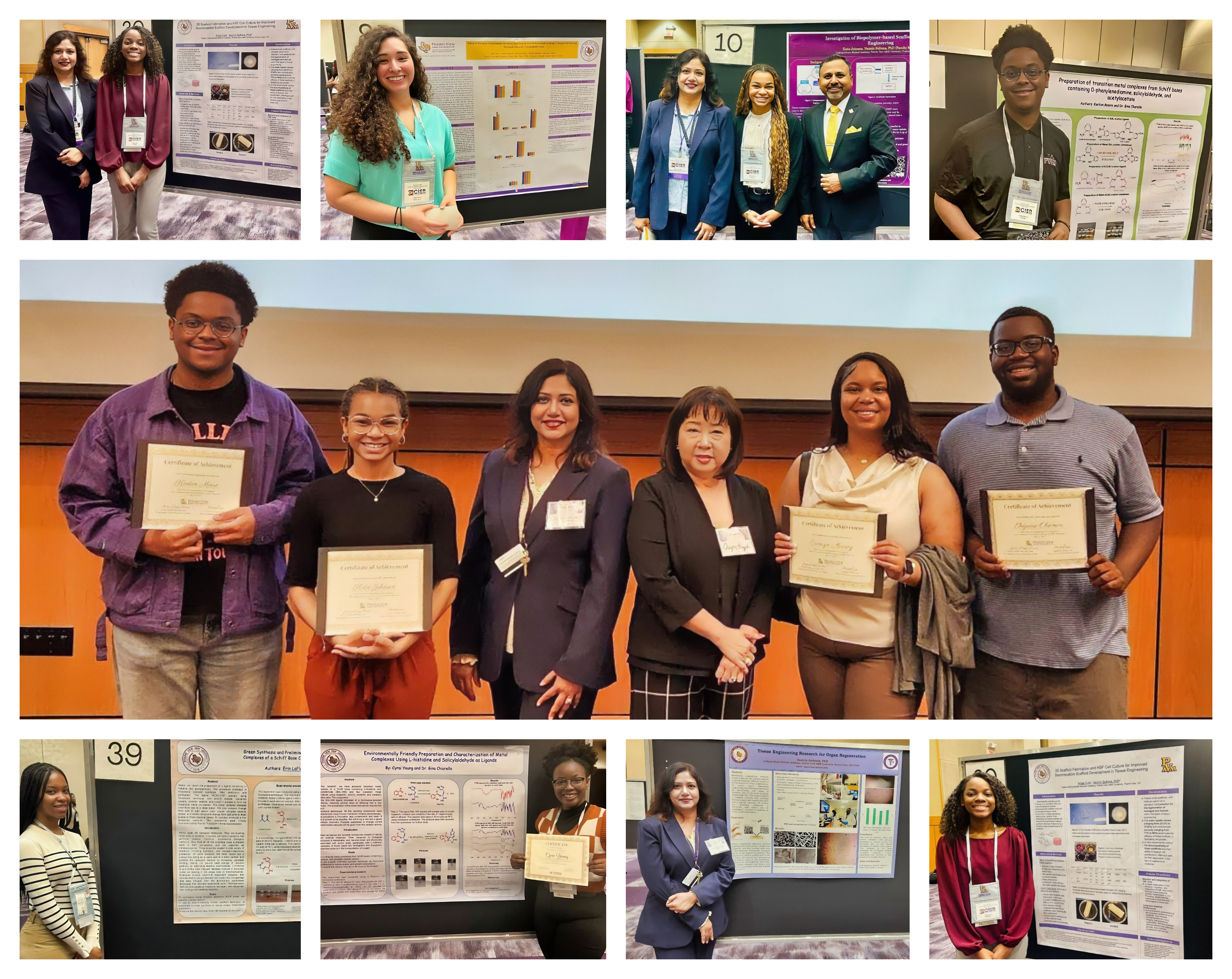
The Texas Undergraduate Medical Academy, UMA, Research Laboratory is under the supervision of Dr. Dumitru Iacobas and Dr. Naznin Sultana. The research lab is located on the third floor of the Harrington Science Building. The lab spans rooms 301 – 305. Rooms 301A, 301B, 303A, and 304 form the computational core of our lab; rooms 303 and 303B form the analytical core of the lab; room 305 is our Medical Academy Student Research Center. The research facilities can accommodate numerous undergraduate students, graduate students, postdocs, and/or visiting faculty.
Dr. Dennis E. Daniels – UMA Director & Professor
Dr. Dumitru Iacobas – UMA Personalized Genomics Laboratory Coordinator
Dr. Naznin Sultana – UMA Bioengineering and Molecular Biology Laboratory Coordinator
Dr. Gail Brekke: UMA English Faculty
Ms. Kathleen Straker: UMA Academic Coach & Study Skills Instructor
Ms. Tenley Sablatzky: UMA Medical Librarian
Mrs. Quyen Huynh – UMA Assistant Director & Clinical Assistant Professor
- Data Analyst

The analytical core of the Undergraduate Medical Academy’s research lab can accommodate multiple scientists concurrently and is made up of the BSL2-certified Bioengineering and Molecular Biology Laboratory, under the supervision of Dr. Naznin Sultana, and the Personalized Genomics Laboratory (PGL), under the supervision of Dr. Dumitru Iacobas. Our laboratory is fully equipped with state-of-the-art videoconferencing equipment that facilitates virtual meetings as well as virtual seminars. Resources within the lab space are secured with a DL2800 Trilogy Series with Standalone Access Control System.
The BSL2-certified Bioengineering and Molecular Biology Laboratory is fully equipped to conduct drug delivery and regenerative medicine research. This UMA experimental lab has the following major federal-grade laboratory equipment:
- Baker Sterigard, Class II Biosafety Cabinet
- Yamato Sterilizer SM 501
- Tuttnauer 2540 Heidolph Autocalve
- Thermo Scientific, Hamilton Safeaire II Fume hood
- Labconco Freezone 2.5 Freeze Dryer/Lyophilizer
- Microplate reader (BioTek Synergy HT)
- Fisherbrand Isotemp Freezer
- Freezers (-80℃, -20℃),
- Hotplate and magnetic stirrer
- Water bath
- Vacuum pump
- UFLC, LC-MS 2020 Shimadzu mass spectrometer system
- Centrifuges (Eppendorf centrifuge 5415R, Thermo Scientific Heraeus Megafuge 8 and 16)
- Thermo Scientific Heracell 150i Carbon dioxide incubator
- Digital microscope (Olympus Microscope DP 27)
- VWR Inverted microscope
- Automatic cell counter (Nano Entek EVE)
- Analytical balance (Explorer Pro OHAUS)
- Digital voltmeters and pH meters
- Oxygen sensors
- Moisture content analyzer (Mettler HC 103)
- Water activity meter (Aqua Lab 4TE)
- Standard laboratory necessities
- Cell culture facilities,
- Microbial culturing facility
- Electrospinning set-up
In Addition, the Personalized Genomics Laboratory (PGL), located partly in MASRC in the M.T. Harrington Science Building, is fully equipped for various genomics experiments. Major federal-grade equipment include:
- SureScan Microarray Scanner Bundle (Agilent)
- Axon 4300 Scanner (Molecular Device)
- 2100 Electrophoresis Bioanalyzer (Agilent)
- NanoDrop 2000 Spectrophotometer (Thermo Fisher Scientific)
- VAC CONC W/PUMP MDL 5301 (Fisher Scientific)
- Refrigerated centrifuge (Eppendorf)
- S1000 Thermal Cycler (BioRad)
- Amplitronyx 4 Thermal Cycler (GMI)
- Thermo Scientific Western Blotting set-up
- Hybridization Oven (Agilent), Hyb-Oven (Illumina)
- -80ºC SO-LOW freezer (Environmental Equipment)
- -20ºC/4 ºC refrigerators
- Biological Oxygen Monitor (YSI)
- Mouse Oximeter (Starr)
- Dissecting microscope
- Phase contrast microscope
- Tissue tears
- Recording pH meter
- GenPur Pro DI Water System
UMA Team: Research Interests
- Use of epidemiological methods in the control and prevention of chronic diseases (e.g. diabetes and hypertension) that are responsible for end-stage renal disease and the infectious disease HIV/AIDS among older Americans
- Epidemiology of organ donation and transplantation
- Cancer genomics
- Neurogenomics
- Cardiogenomics
- Biomaterials and Tissue Engineering for Organ Regeneration
- Drug Delivery
- Biofabrication, Evaluation, and surface Modification
- Electrospinning

- Cognitive Emotions
- Reading Comprehension
- Critical Thinking Skills
- Theoretical Physics
- Long-term memory
- Student Success
- Health science education
- Study skills
- Student retention
- Retrieval practice
- Professional identity formation
- Self-efficacy
- Digital Health Information-Seeking Behavior
- Misinformation, Disinformation, and Malinformation
- Information Trust and Source Credibility
- Digital Technologies for Education and Health











